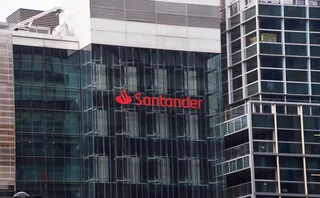
UBS report lists failures in risk management
Lack of attention, overconfidence and poor risk management procedures were at the root of UBS's subprime losses, according to a damning report released by the bank to its shareholders.
The 45-page report is a summary of a longer document sent by the bank to the Swiss federal banking commission, which is investigating the losses.
The bank said its subprime writedowns totalled $18.7 billion in 2007, and it reported another $19 billion in writedowns in the first quarter of 2008.
UBS's internal alternative asset management arm, Dillon Read Capital Management (DRCM), came in for particular criticism. Within six months of its launch in June 2006, the report said, "issues regarding the performance of DRCM were being raised internally". After DRCM was shut down in May 2007, an internal audit found it had been delinquent in risk measurement and reporting, and its valuation had not been "sufficiently transparent".
The report also cited "concerns regarding the lack of a comprehensive business case/plan; the complexity and cost of the business model adopted; a number of cultural issues; and financial performance being out of line with the (limited) prior assessment conducted before establishment".
DRCM also distracted senior management, both because many fixed-income managers were transferred at the time of the start-up, and because the work involved in starting and winding up DRCM "required the focus of senior management".
The investment banking arm was also at fault, being too focused on profit at the expense of risk avoidance, the report said. The investment bank depended on value at risk for its risk management, which proved "inappropriate", and did not have the infrastructure to handle the complex products it was trading. Investment bank senior management also failed to demand risk assessments and oversight from the teams dealing with subprime investments through collateralised debt obligations (CDO) and mortgage-backed securities (MBS).
The bank also admitted that it had been overconfident about the prospects for subprime-based assets - in 2007, although its own analysts were warning of the dangers of the subprime market, both CDO and MBS teams were asking for their risk limits to be raised.
Over-reliance on inadequate risk measures such as VAR also helped the bank along its way to catastrophe. UBS's VAR and stress tests were based on five years of "relatively positive growth" and so were falsely optimistic. It failed to analyse the risks specific to the housing market, and relied too heavily on rating agency assessments of the products in its portfolio. Compensation for employees rewarded short-term profits rather than long-term avoidance of risk.
Heads have rolled at UBS since the losses began: Peter Wuffli, chief executive while DRCM was set up, left the bank in July 2007, to be followed by fixed-income head Simon Bunce in August, and Huw Jenkins stepped down as chairman and CEO of the investment bank in October, as did group chief financial officer Clive Standish.
See also: UBS reveals $19 billion more subprime losses
New chairman and CEO for UBS Investment Bank
A VAR, VAR better thing?
UBS startles market with $14 billion writedown
UBS takes $3.4 billion hit
Only users who have a paid subscription or are part of a corporate subscription are able to print or copy content.
To access these options, along with all other subscription benefits, please contact info@risk.net or view our subscription options here: http://subscriptions.risk.net/subscribe
You are currently unable to print this content. Please contact info@risk.net to find out more.
You are currently unable to copy this content. Please contact info@risk.net to find out more.
Copyright Infopro Digital Limited. All rights reserved.
As outlined in our terms and conditions, https://www.infopro-digital.com/terms-and-conditions/subscriptions/ (point 2.4), printing is limited to a single copy.
If you would like to purchase additional rights please email info@risk.net
Copyright Infopro Digital Limited. All rights reserved.
You may share this content using our article tools. As outlined in our terms and conditions, https://www.infopro-digital.com/terms-and-conditions/subscriptions/ (clause 2.4), an Authorised User may only make one copy of the materials for their own personal use. You must also comply with the restrictions in clause 2.5.
If you would like to purchase additional rights please email info@risk.net
More on Risk management
Regionals built first-line defences pre-CrowdStrike
In-business risk teams vary in size and reporting lines, but outage fears are a constant
Op risk data: Santander in car crash of motor-finance fail
Also: Macquarie fined for fake metals trade flaws, Metro makes AML misses, and Invesco red-faced over greenwashing. Data by ORX News
Public enemy number one: the threat to information security
Nearly half of domestic and regional banks report risk appetite breaches amid heightened sense of insecurity
Credit risk transfer, with a derivatives twist
Dealers angle to revive market that enables them to offload counterparty exposures, freeing up capital
Op Risk Benchmarking 2024: the banks
As threats grow and regulators bore down, focus shifts to the first line
Fed stress-testing operational readiness of discount window
Experts say consultation on improved ops should be accompanied by focus on willingness to borrow
Millennium risk manager defends leverage in basis trade
“Gross notional measures don’t equate to market risk,” says Scott Rofey
Banks feel regulatory heat on op resilience
Op Risk Benchmarking: supervisors dial up reporting expectations and on-site inspections







